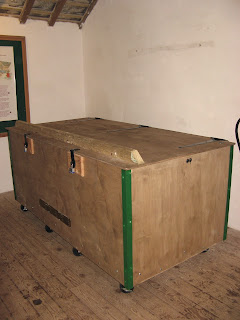The Second Wheel Project
Acorn bank watermill originally had two waterwheels (actually there are three positions where wheels may have been, but there is some doubt whether there were ever more than two at a time). The first wheel, a pitchback, was restored with the mill in 1990 and is the one we use to drive the stones. The second, overshot, one had been taken out of milling service in the early 1900’s and used to provide power to a nearby gypsum mine. It was not restored with the mill and half the shrouds were missing or too badly damaged to reuse.
In early 2020 it was agreed with the National Trust that we might try to restore it, but lockdown meant that came to nothing. We have recently resurrected the project. As the mill is a grade 2* listed building, we needed listed building consent from the local authority and Historic England (HE). HE were enthusiastic about our proposal and consent was granted in January 2023. Work has now started.
 |
| The 3-d printed pattern |
 |
| The new shrouds |
At the end of the milling season we had scaffolding erected in the wheel pit so we could make progress with the modification of the water feed to drive the second wheel. The old deflector on the end of the launder, that ensures the momentum of the flowing water doesn’t act against the wheel’s motion, has been removed. Various beams have had to be reduced so the new water channel runs level and a start has been made on building it.
 |
| Reducing the depth of a supporting beam |
 |
| Fitting the first board of the new channel |











